Lesson 4
Square Roots on the Number Line
4.1: Notice and Wonder: Diagonals
What do you notice? What do you wonder?
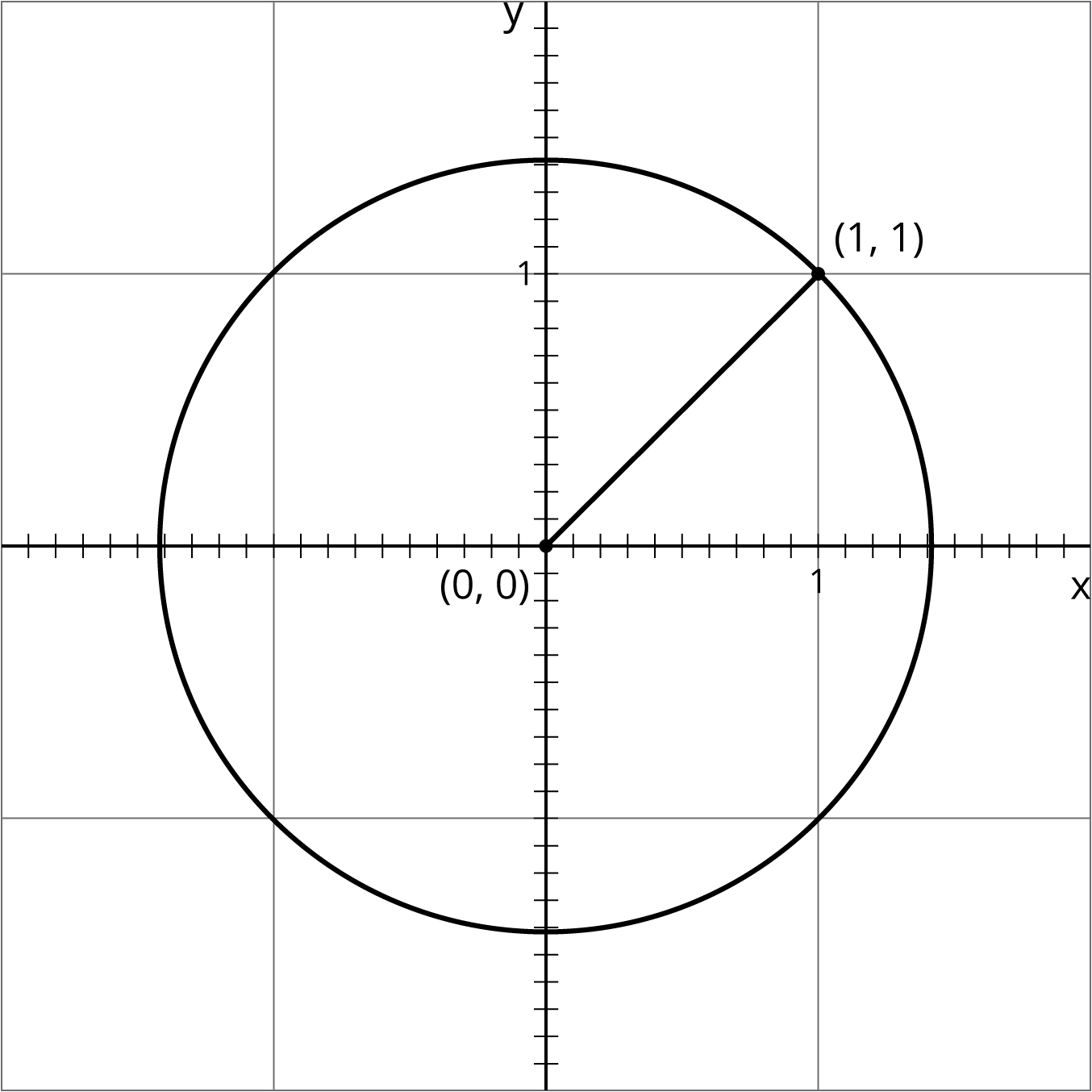
4.2: Squaring Lines

- Estimate the length of the line segment to the nearest tenth of a unit (each grid square is 1 square unit).
-
Find the exact length of the segment.
4.3: Square Root of 3
Diego said that he thinks that \(\sqrt{3}\approx 2.5\).
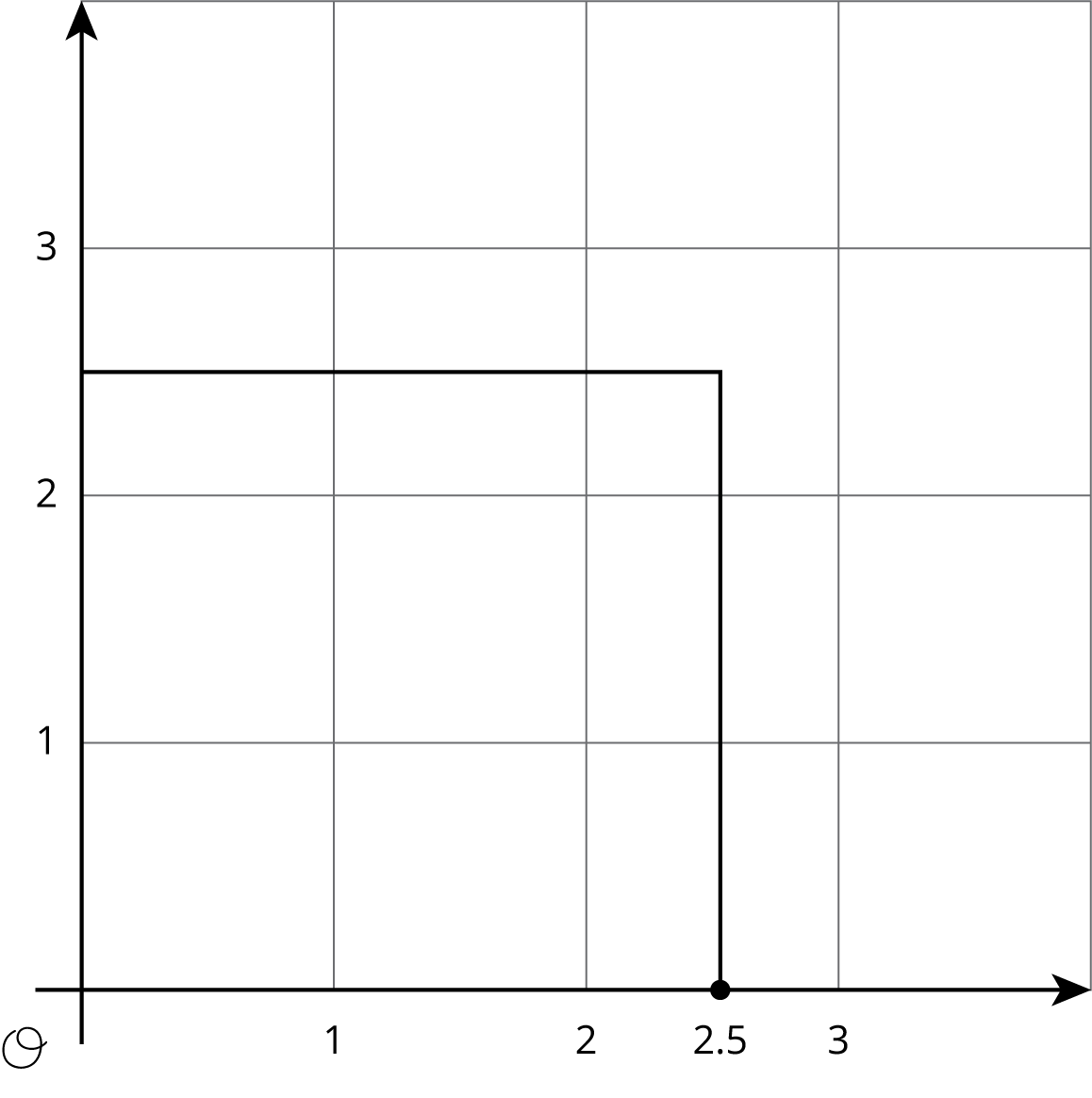
- Use the square to explain why 2.5 is not a very good approximation for \(\sqrt{3}\). Find a point on the number line that is closer to \(\sqrt{3}\). Draw a new square on the axes and use it to explain how you know the point you plotted is a good approximation for \(\sqrt{3}\).
-
Use the fact that \(\sqrt{3}\) is a solution to the equation \(x^2 = 3\) to find a decimal approximation of \(\sqrt{3}\) whose square is between 2.9 and 3.1.
A farmer has a grassy patch of land enclosed by a fence in the shape of a square with a side length of 4 meters. To make it a suitable home for some animals, the farmer would like to carve out a smaller square to be filled with water, as in the figure.
What should the side length of the smaller square be so that half of the area is grass and half is water?
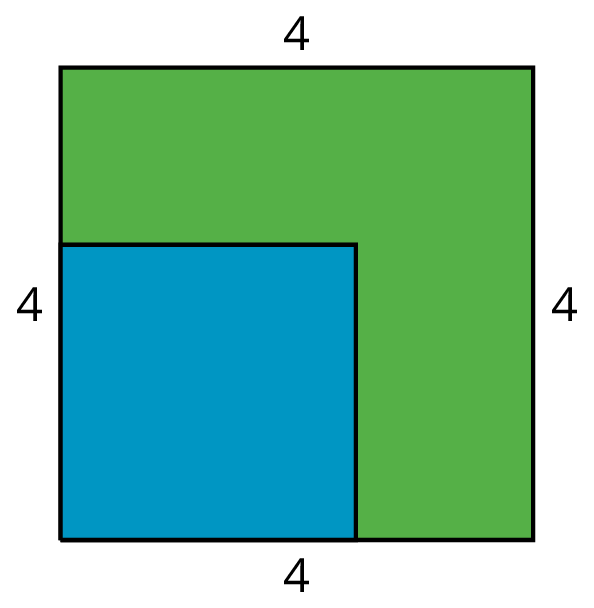
4.4: Solutions on a Number Line
The numbers \(x\), \(y\), and \(z\) are positive, and \(x^2 = 3\), \(y^2 = 16\), and \(z^2 = 30\).

- Plot \(x\), \(y\), and \(z\) on the number line. Be prepared to share your reasoning with the class.
- Plot \(\text- \sqrt{2}\) on the number line.
Summary
Here is a line segment on a grid. What is the length of this line segment?
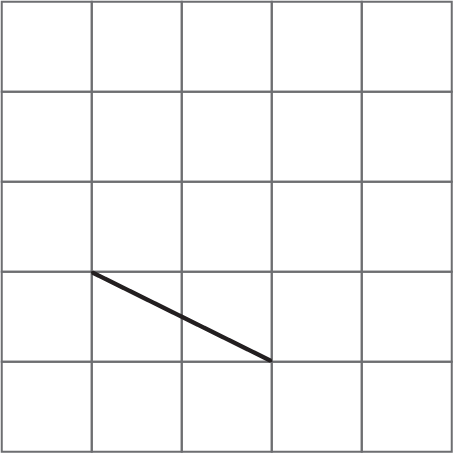
By drawing some circles, we can tell that it’s longer than 2 units, but shorter than 3 units.

To find an exact value for the length of the segment, we can build a square on it, using the segment as one of the sides of the square.
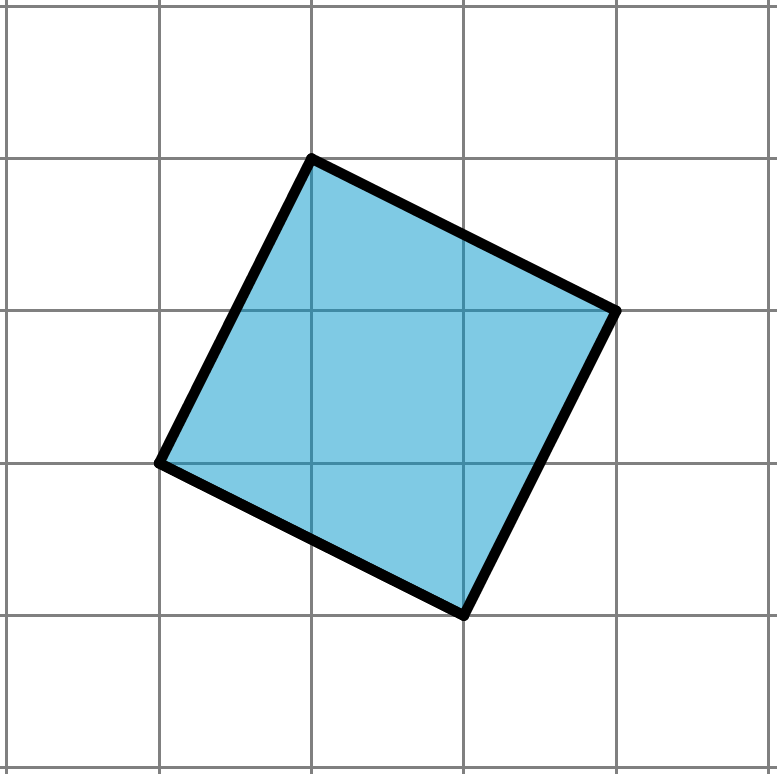
The area of this square is 5 square units. (Can you see why?) That means the exact value of the length of its side is \(\sqrt5\) units.
Notice that 5 is greater than 4, but less than 9. That means that \(\sqrt5\) is greater than 2, but less than 3. This makes sense because we already saw that the length of the segment is in between 2 and 3.
In general, we can approximate the values of square roots by observing the whole numbers around it, and remembering the relationship between square roots and squares. Here are some examples:
- \(\sqrt{65}\) is a little more than 8, because \(\sqrt{65}\) is a little more than \(\sqrt{64}\) and \(\sqrt{64}=8\).
- \(\sqrt{80}\) is a little less than 9, because \(\sqrt{80}\) is a little less than \(\sqrt{81}\) and \(\sqrt{81}=9\).
- \(\sqrt{75}\) is between 8 and 9 (it’s 8 point something), because 75 is between 64 and 81.
- \(\sqrt{75}\) is approximately 8.67, because \(8.67^2=75.1689\).

If we want to find a square root between two whole numbers, we can work in the other direction. For example, since \(22^2 = 484\) and \(23^2 = 529\), then we know that \(\sqrt{500}\) (to pick one possibility) is between 22 and 23.
Many calculators have a square root command, which makes it simple to find an approximate value of a square root.
Glossary Entries
- irrational number
An irrational number is a number that is not a fraction or the opposite of a fraction.
Pi (\(\pi\)) and \(\sqrt2\) are examples of irrational numbers.
- rational number
A rational number is a fraction or the opposite of a fraction.
Some examples of rational numbers are: \(\frac74,0,\frac63,0.2,\text-\frac13,\text-5,\sqrt9\)
- square root
The square root of a positive number \(n\) is the positive number whose square is \(n\). It is also the the side length of a square whose area is \(n\). We write the square root of \(n\) as \(\sqrt{n}\).
For example, the square root of 16, written as \(\sqrt{16}\), is 4 because \(4^2\) is 16.
\(\sqrt{16}\) is also the side length of a square that has an area of 16.